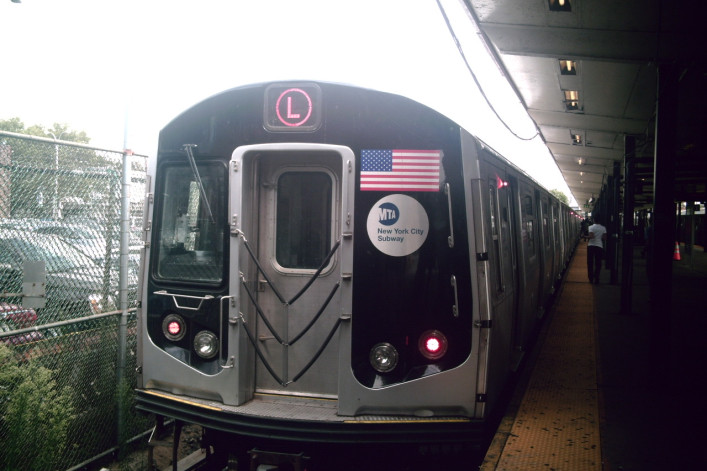Brooklyn’s Housing Market Braces for an L Train Shutdown

Fast on the heels of Governor Cuomo’s announcement of possible widespread subway station shutdowns comes the news that L train service between Brooklyn and Manhattan, too, may be taken offline—for anywhere from one year to three. The closure is necessary, the MTA says, to repair damage from 2012’s Hurricane Sandy, which flooded the Canarsie Tube with saltwater.
It’s not clear yet how exactly the MTA will handle repair work—options range from partial closures to total shutdown, with the L terminating at Bedford Avenue for an undetermined amount of time. Regardless, the impact on commuters will be significant: Subway ridership at every station along the L has skyrocketed in recent years, and in 2014, according to DNAInfo, each stop saw an average increase of 5,600 passengers.
Which brings us to a salient question: How might it impact Brooklyn’s housing market, especially in such hotspots as Williamsburg and Bushwick? Andrew Barrocas, CEO of the Williamsburg-based MNS brokerage firm, says he's thinking optimistically and taking the long view.
“Real estate as a whole is not looked at on an annual basis; it’s more of a generational type asset where people own things long-term,” he says. “I think the improvements that need to be done are being done, and it’s only going to make the area more desirable.” Barrocas adds that while there’s no definite plan yet of when and how closures will happen, he’s confident that people will come up with alternatives for getting to work—whether it’s through using services like Uber, biking, or taking a water taxi or shuttle bus.
Furthermore, he says, many locals these days work from home or in Brooklyn: “We’ve seen more and more people who aren’t necessarily commuting into Manhattan like they were ten years ago,” Barrocas says. “As Brooklyn becomes a place where people not only live but also work, you have to build that into the equation. I think you’ll see the area continue to grow.”


A video posted by Gothamist would suggest otherwise, though: Interviews with L train riders on Bedford Avenue revealed that some would consider moving if a total shutdown does come to pass. There are similar rumblings on Twitter: One user wrote, "This proposed plan to shut down the L train for 3 years makes me think twice about moving back to BK," and another said that such a closure would "materially change the appeal of Williamsburg."
Doug Perlson, founder and principal Broker of RealDirect, says he anticipates a considerable effect on landlords and the rental market. "I would expect to see at least a 5 percent decrease in rents if/when the shut down occurs—and it could be north of 10 percent depending on the down time," he says.
But this could mean good news for renters already living in neighborhoods along the L corridor: “If your lease is coming up for renewal at a time when the L train has been shut down, I would say there’s a very good chance you’re not going to have an increase,” Perlson says. “And there’s an opportunity for some concessions, because rents will be under pressure during that time.”
The sales market needn’t brace for as large an impact, however, he predicts. Less inventory may become available, as sellers recognize the buyer pool could shrink during the train closure. On the other hand, “because the inventory is already really tight, if you have an even tighter amount of inventory, that’s probably going to keep prices stable, if not going up,” Perlson says.
And nearby neighborhoods, like South Williamsburg, which relies on the J/M/Z line, and G-train dependent Greenpoint, might attract buyers and renters who would have otherwise gone to areas along the L. Perlson cites the massive, Domino Sugar Factory redevelopment plan; coupled with an offline L, he says that there could be “a big boom for those South Williamsburg projects that are in development. That’s going to accelerate the gentrification and development of those areas.”
The most harshly affected, though, may turn out to be local businesses. Williamsburg and Bushwick-based restaurant owners are alarmed by the prospect of diminished L service hurting business, and some are banding together and organizing a meeting with reps from the city government.
Rightfully so, Perlson says: Commercial rent increases in those neighborhoods mean that even today, many retailers and restaurateurs struggle just to break even. “If you’re a retail business in Williamsburg, or all along the L corridor, you’re counting on more and more people moving into those neighborhoods, and that’s priced into your rent,” he says. “If all of a sudden there’s less foot traffic, that’s going to have a huge impact. I think that’s probably the scariest element of an L shut down. If you’re the city and you care about local businesses, there should be something done about that.”
Related:
Cuomo announces dramatic revamp to 30 subway stations -- will your stop be affected?
An affordable rental in Williamsburg? Now's the time to prepare
























